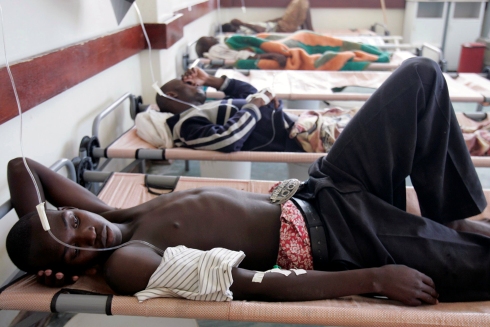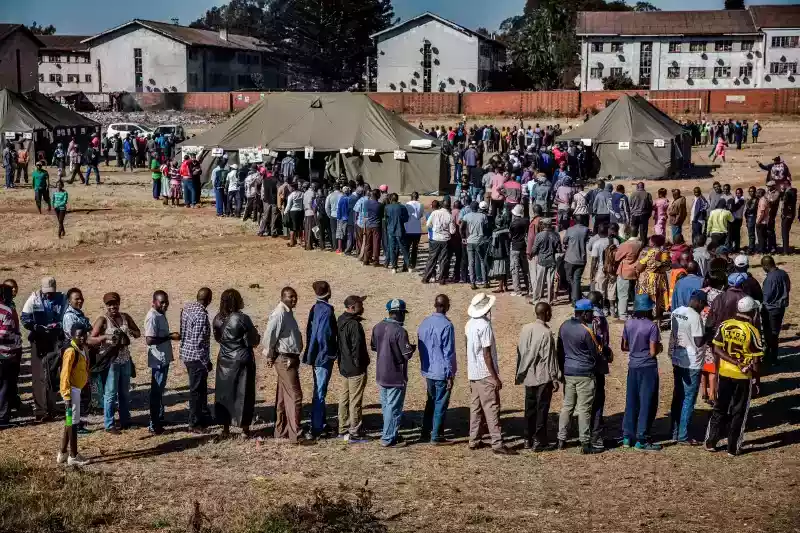
The Zimbabwe government’s investment in the health sector has been inadequate and the country has generally depended on donor support and direct budget support to run the public health institutions.
The health sector has as a result failed to provide adequate services to the people especially those do not have medical insurance. The crisis in the health sector is dramatised by these six horror facts about the state of the health sector.
1. No medical aid
MORE than 11 million Zimbabweans, representing 90% of the population have no access to medical aid. The country has no national health insurance system despite promises by the government to, come up with Health Insurance Scheme.
2. $20/person annually
This year, the government has allocated $301 million to the health sector for a country of 13,5 million. This is to say that the government intends to spend on average just over $22 on an individual this year. Compare this with $650 for South Africa, $90 Botswana, $390 Botswana and $200 Angola.
3. Crib deaths
The country’s infant mortality rate: at 57/1,000 live births is one of the highest in the world. Infant mortality rate is the number of infants dying before reaching one year of age. The Zimbabwe Demographic Survey results released last year shows that 84 children out of a 1000 under are likely to die before they reach the age of five.
4 .Maternal mortality rate: 960/100,000 live birth About 1000 women out of 100 000 die during giving birth. The major causes of maternal mortality are bacterial infection, uterine rupture (scar from a previous caesarean section tearing during an attempt at birth), renal and cardiac failure as well as hyperemesis gravidarum (condition characterised by severe nausea, vomiting and weight loss during pregnancy).
About 1000 women out of 100 000 die during giving birth. The major causes of maternal mortality are bacterial infection, uterine rupture (scar from a previous caesarean section tearing during an attempt at birth), renal and cardiac failure as well as hyperemesis gravidarum (condition characterised by severe nausea, vomiting and weight loss during pregnancy).
At Independence in 1980, the country had a low maternal mortality rate of just 90 per 100 000 live births. However, in 1994 the gains in the health sector plummeted to 253 per 100 000 live births. As if this was not enough, a more frightening situation was still to come.
5 . Just.1.6 Doctors per 10,000 people Zimbabwe has suffered immensely from a brain drain of doctors. There are now 1,6 doctors for every 10 000 people. Most government rural health centres are manned by two doctors who have to perform multiple tasks. Linked to this, there are just seven nurses and trained midwives for every 10 000 people in the country.
Zimbabwe has suffered immensely from a brain drain of doctors. There are now 1,6 doctors for every 10 000 people. Most government rural health centres are manned by two doctors who have to perform multiple tasks. Linked to this, there are just seven nurses and trained midwives for every 10 000 people in the country.
- Chamisa under fire over US$120K donation
- Mavhunga puts DeMbare into Chibuku quarterfinals
- Pension funds bet on Cabora Bassa oilfields
- Councils defy govt fire tender directive
Keep Reading
The paucity of medical staff is also reflected in the number of specialist doctors. The country has four neurosugeons, two heart surgeons, three dermatologists and one venereologist according to data is Zanu PF’s 2013 election manifesto..
6 Donor-funded medicines
Due to poor funding of the health sector, 98% of drugs used in public health centres are funded by donors. The donor community has also equipped a number of rural health centres such that Zimbabwe now has the uncanny distinction of patients shunning main referral hospitals to be treated in rural hospitals.











